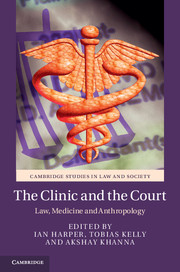Part One - Recognising harm and suffering
Published online by Cambridge University Press: 05 May 2015
- Type
- Chapter
- Information
- The Clinic and the CourtLaw, Medicine and Anthropology, pp. 25 - 160Publisher: Cambridge University PressPrint publication year: 2015



